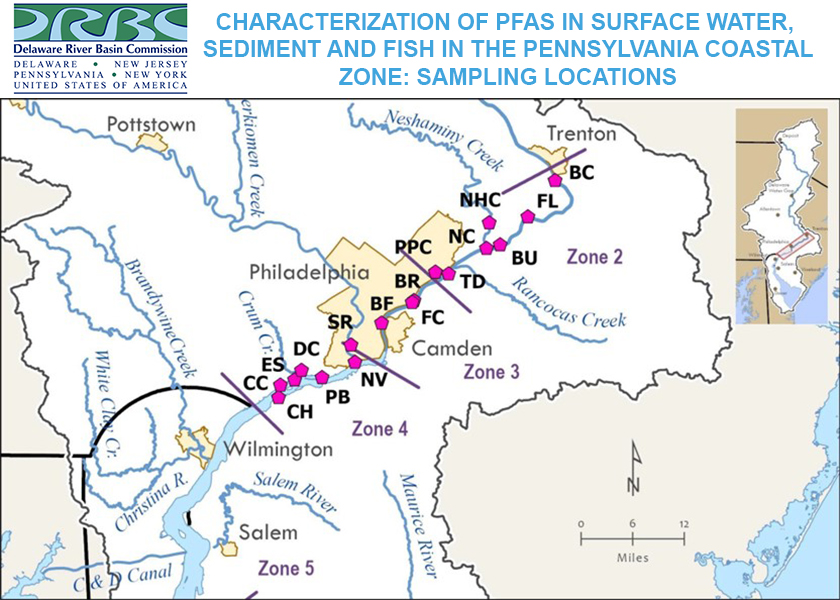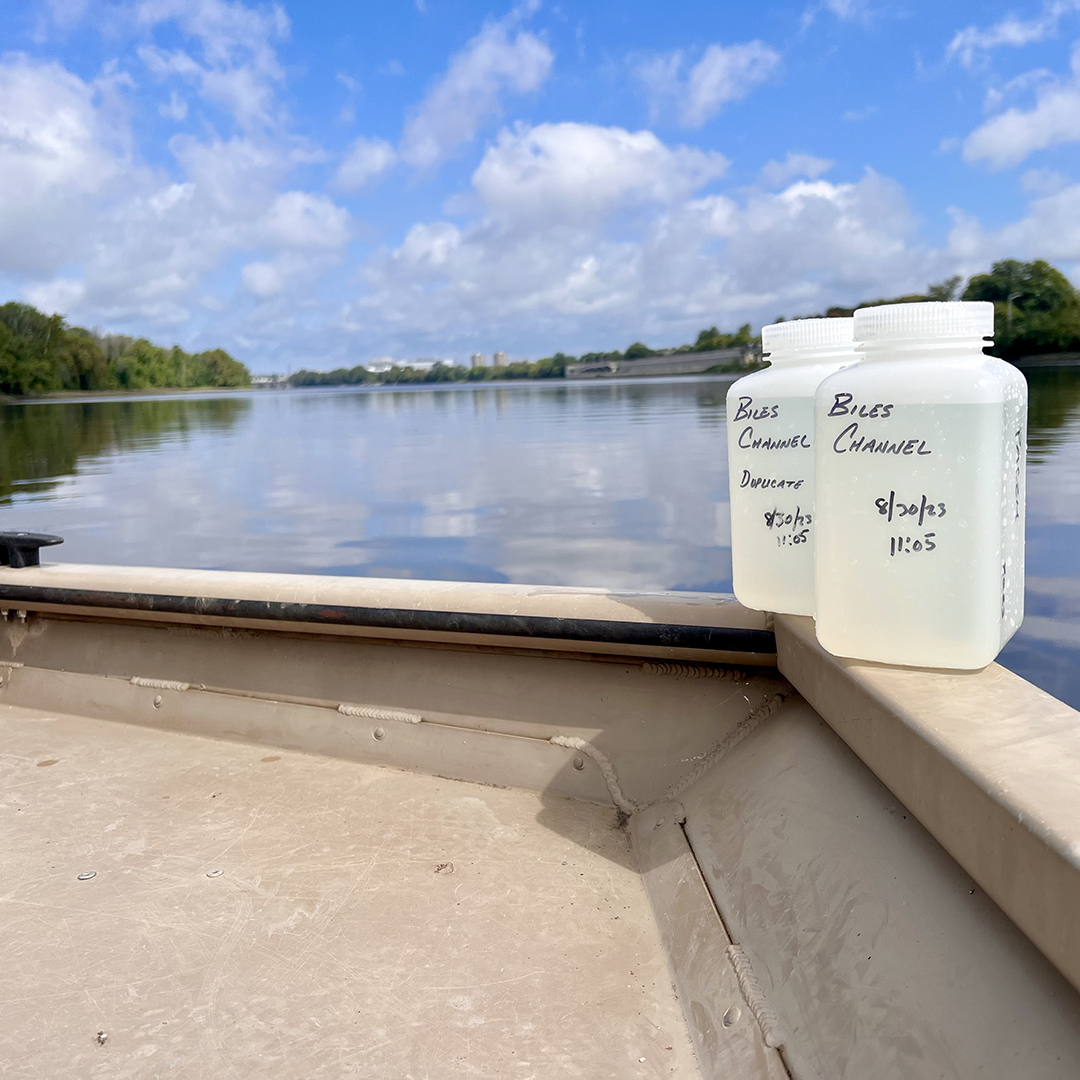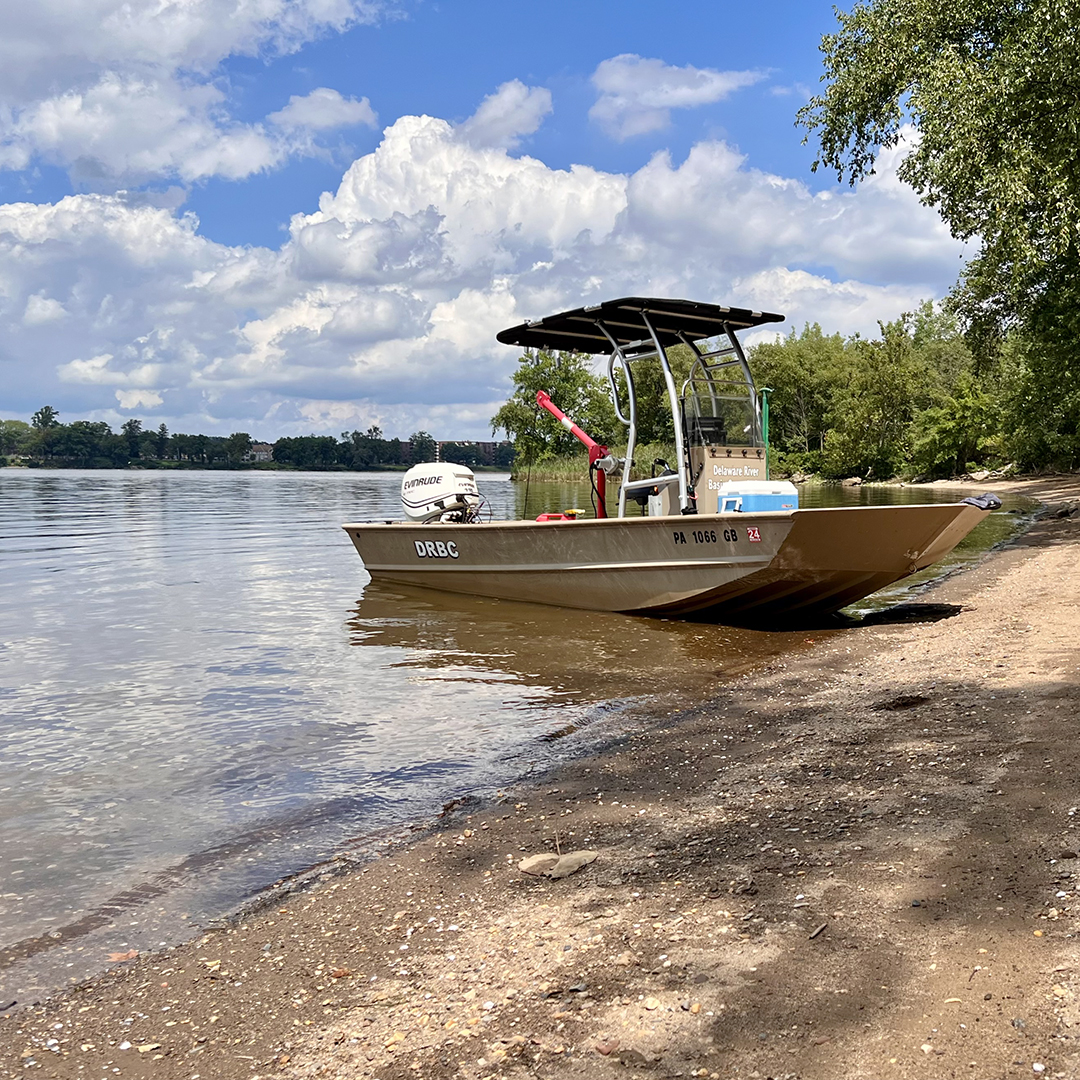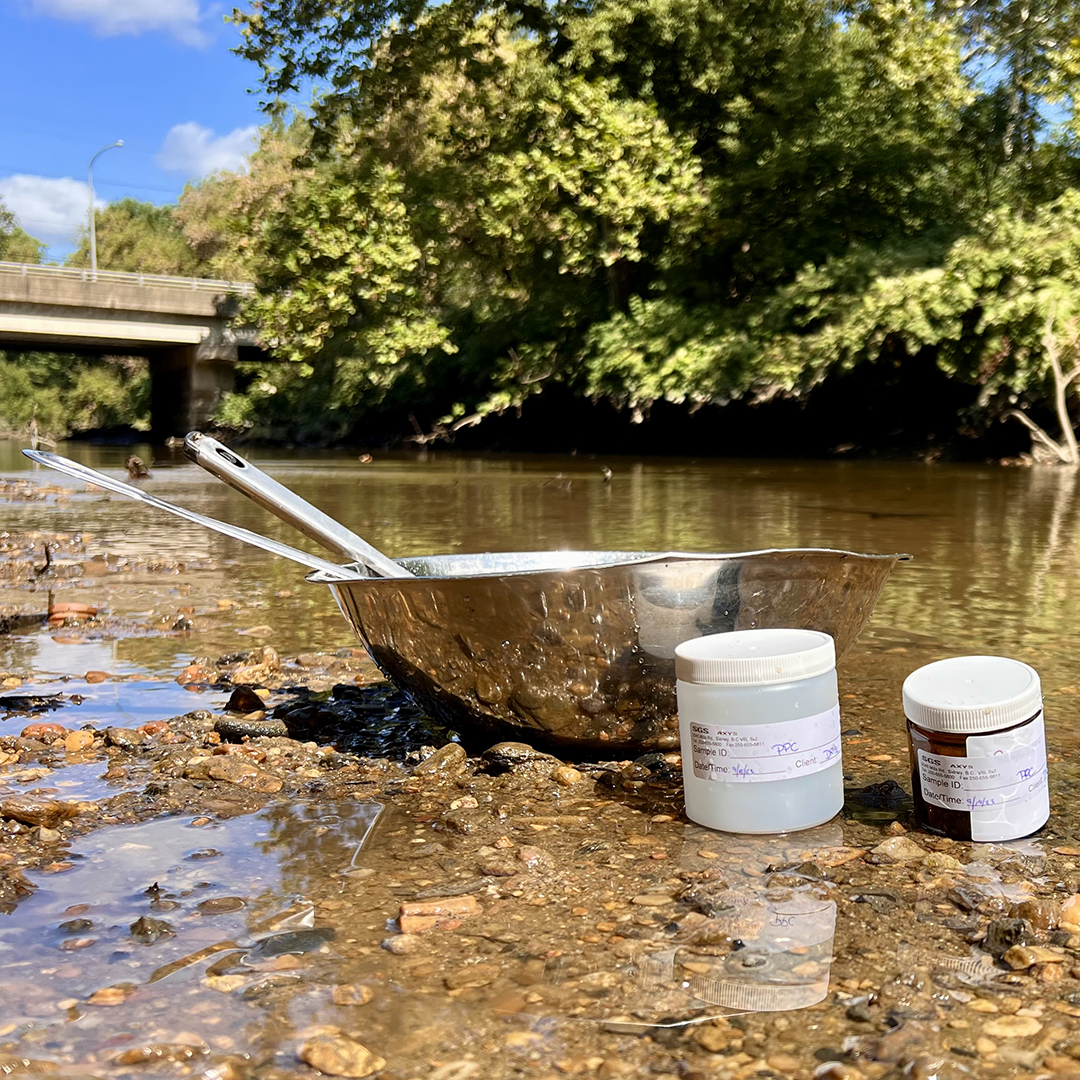Delaware • New Jersey • Pennsylvania
New York • United States of America
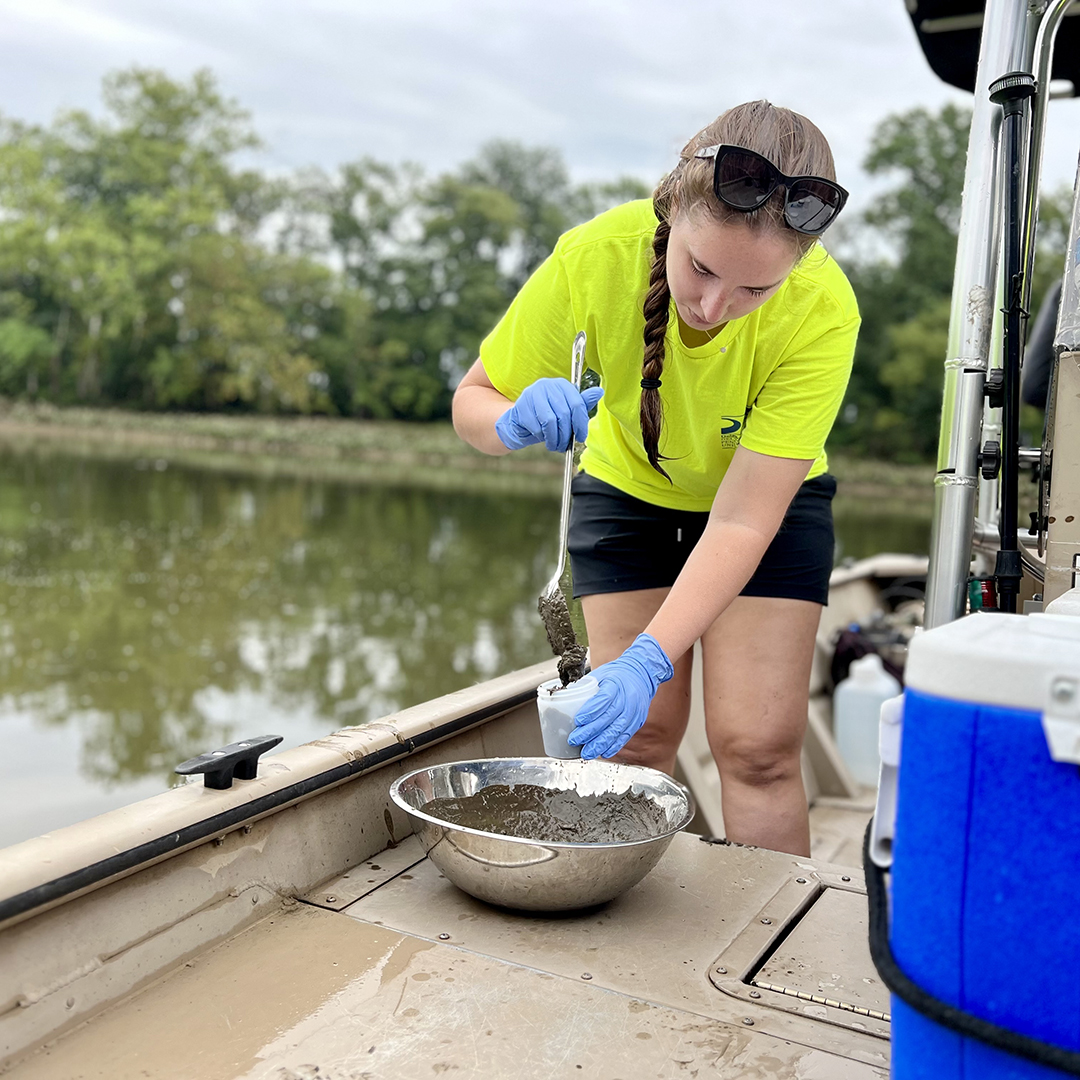 |
| DRBC staff collects a sediment sample from the Neshaminy Creek. Photo by the DRBC. |
The Pennsylvania Coastal Zone includes the tidal waters of the Delaware River and its tributaries stretching from Morrisville to Chester, Pa. Much of this area is marked by high population densities and heavy industrialization, including petrochemical facilities, which are linked to per- and polyfluoroalkyl substances (PFAS) pollution.
PFAS are synthetic chemicals found in various industrial and consumer products, including firefighting foams, cookware and food packaging. The Delaware River has a long history of PFAS pollution, stemming from early research and the manufacturing of PFAS compounds by chemical companies in the Basin. Consequently, various PFAS compounds are consistently detected in the surface waters, sediment and aquatic organisms of the Delaware River Basin, raising concerns about their bioaccumulation and toxicological effects on wildlife, ecosystems and human health.
The DRBC has studied PFAS in the Delaware River Basin since 2004, with expanded sampling efforts beginning in 2020. To better understand PFAS concentrations and distribution in the Pa. Coastal Zone, the DRBC applied for and was awarded a Federal Coastal Zone Management Grant, administered by the PADEP and funded by NOAA. This work yielded two reports: a Year 1 report published in 2023 (pdf) and this Year 2 report.
Both reports document the presence of PFAS in surface water, sediment and fish tissue in this stretch of the Delaware River Estuary and aim to better understand the sources of PFAS contamination, for example, wastewater treatment plants, landfills, industrial outfalls and urban and agricultural runoff.
Read the PA Coastal Zone Year 2 Report
• Characterization of PFAS in Surface Water, Sediment and Fish in the Pennsylvania Coastal Zone (pdf; 2025)
Year 2 Report: Sampling Locations
DRBC sampled water and sediment from 10 main stem sites on the Delaware River (marked with *) and from seven tributary sites (marked with **). The six sites where fish tissue was also collected are marked with a #.
- Biles Channel (BC)*#
- Florence (FL)*#
- Burlington Bristol Bridge (BU)*
- Torresdale (TD)*#
- Betsy Ross (BR)*
- Ben Franklin Bridge (BF)*
- Navy Yard (NV)*
- Philadelphia Airport (PB)*
- Eddystone (ES)*#
- Chester (CH)*#
- Neshaminy Creek (head of tide) (NHC)**
- Neshaminy Creek (NC)**
- Pennypack Creek (head of tide Frankford Ave) (PPC)**
- Frankford Creek (FC)**
- Schuylkill River (SR)**#
- Darby Creek (DC)**
- Chester Creek (CC)**
Year 2 Report: Results
Results show that PFAS were quantifiable in all 17 water and 8 fish samples, as well as 15 of 17 sediment samples. Although the compounds and concentrations varied depending on the matrix (water, sediment or fish tissue), this study shows that PFAS are present in the Pennsylvania Coastal Zone and emphasizes the need for continued monitoring and analysis to protect water resources essential to ecosystem and human health. Surface water sampling shows that PFAS concentrations generally increase as water moves downstream from Morrisville, Pa. to Chester, Pa., although there is no similar trend with sediment and fish tissue concentrations.
Next Steps
This study adds to the existing PFAS dataset in the Delaware River Basin, which shows that PFAS are consistently found in water, sediment and fish tissues in the DRB. Next steps include the development of a PFAS Roadmap to synthesize existing data, identify knowledge gaps and pinpoint potential sources to further efforts to mitigate these compounds.
Copyright © Delaware River Basin Commission,
P.O. Box 7360, West Trenton, NJ 08628-0360
Phone (609)883-9500; Fax (609)883-9522
Thanks to NJ for hosting the DRBC website
